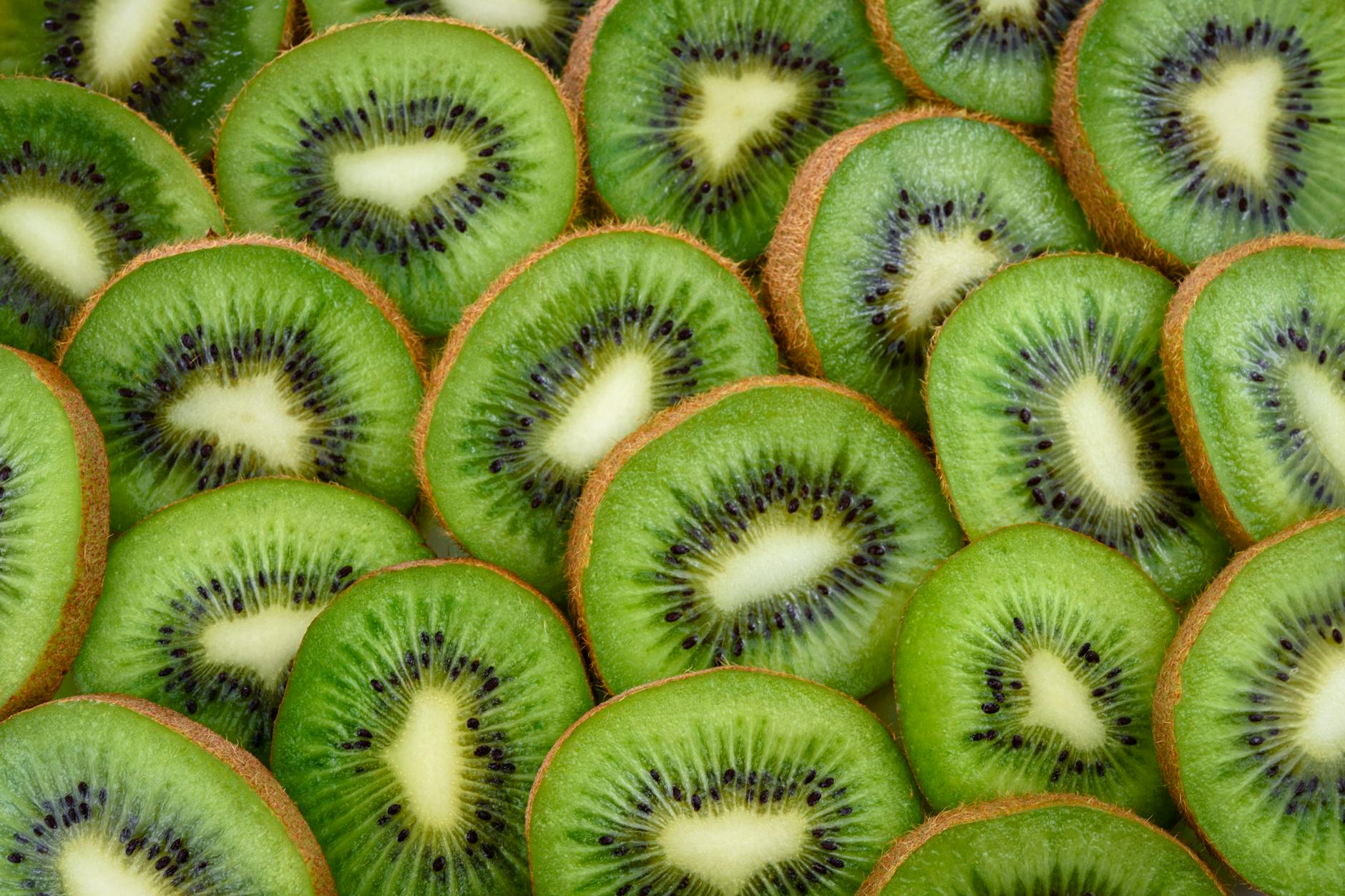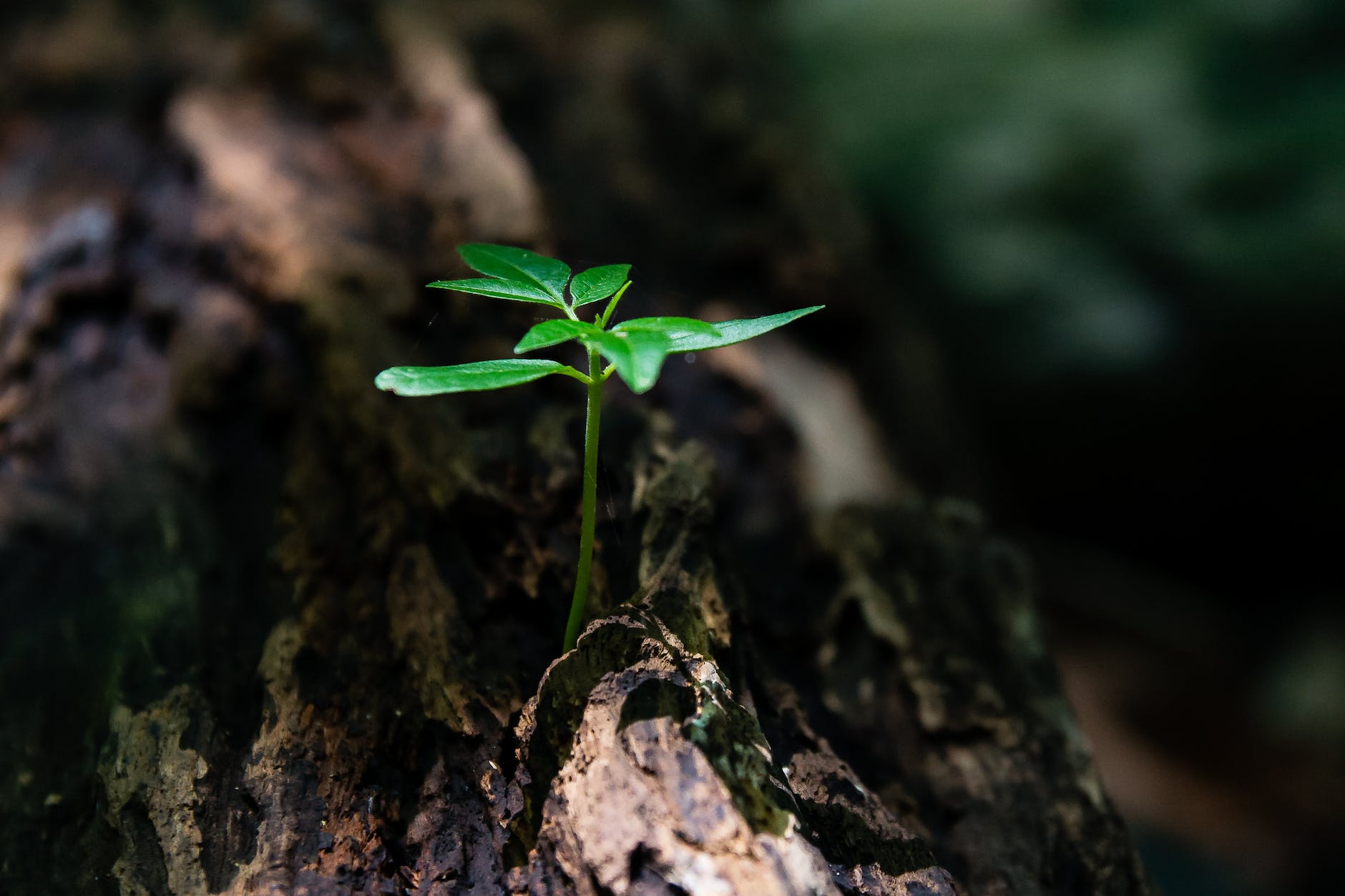Imagine a fruit that not only delights your palate with its vibrant flavor but also fortifies your body with an impressive array of nutrients. This is the kiwi, a fruit that has journeyed from the serene orchards of China to the bustling markets of the world, embodying both cultural significance and agricultural ingenuity.
The kiwi is more than just a sweet, tangy treat; it represents a convergence of history, biology, economy, and sustainability. By delving into the multifaceted world of the kiwi, we uncover not only the secrets behind its unique taste and nutritional benefits but also the intricate web of relationships that sustain its global presence.
Whether you’re a fruit enthusiast, a health-conscious individual, or someone curious about agricultural practices, the kiwi offers a rich tapestry of insights waiting to be explored.
History and Origin of Kiwi
The story of the kiwi begins in the heart of China, where it was originally known as the Chinese gooseberry. This fruit, small and unassuming, found its way to New Zealand in the early 20th century, a transition that would redefine its destiny. The fertile soils and temperate climate of New Zealand proved to be the perfect environment for the kiwi to thrive, allowing it to develop the vibrant green flesh and distinctive taste that we recognize today. The name “kiwifruit” itself is a nod to New Zealand’s native kiwi bird, a symbol of national pride that helped in marketing the fruit as an exotic delicacy on the global stage.
As New Zealand’s farmers embraced the kiwi, they implemented innovative cultivation techniques that enhanced its quality and yield. This period also saw the establishment of international trade routes, with kiwi being exported to countries across Europe, North America, and beyond. The fruit’s journey from obscurity to international acclaim is a testament to the power of strategic marketing and agricultural excellence.
Over time, other countries such as Italy, Greece, Iran, and Chile joined the ranks of kiwi producers, each bringing their unique climatic advantages and cultivation practices to the table. This global expansion not only diversified the varieties of kiwi available but also solidified its place in the international fruit market.
Nutritional Profile and Health Benefits
At first glance, the kiwi’s bright green flesh and tiny black seeds might seem like a simple fruit choice, but beneath its unpretentious exterior lies a powerhouse of nutrients. Each kiwi is a rich source of vitamin C, surpassing even oranges in its concentration. This essential vitamin plays a crucial role in bolstering the immune system, aiding in the repair of tissues, and acting as a potent antioxidant that combats free radicals in the body. Additionally, kiwis provide a significant amount of vitamin K, which is vital for blood clotting and bone health, and vitamin E, another powerful antioxidant that supports skin and eye health.
Beyond vitamins, kiwis are packed with dietary fiber, which is instrumental in promoting digestive health and maintaining a healthy weight. The high fiber content aids in regulating blood sugar levels and reducing cholesterol, contributing to overall cardiovascular health. Minerals such as potassium and magnesium found in kiwis are essential for maintaining electrolyte balance, supporting muscle function, and preventing hypertension. Furthermore, kiwis contain antioxidants like lutein and zeaxanthin, which are beneficial for eye health, reducing the risk of age-related macular degeneration and cataracts.
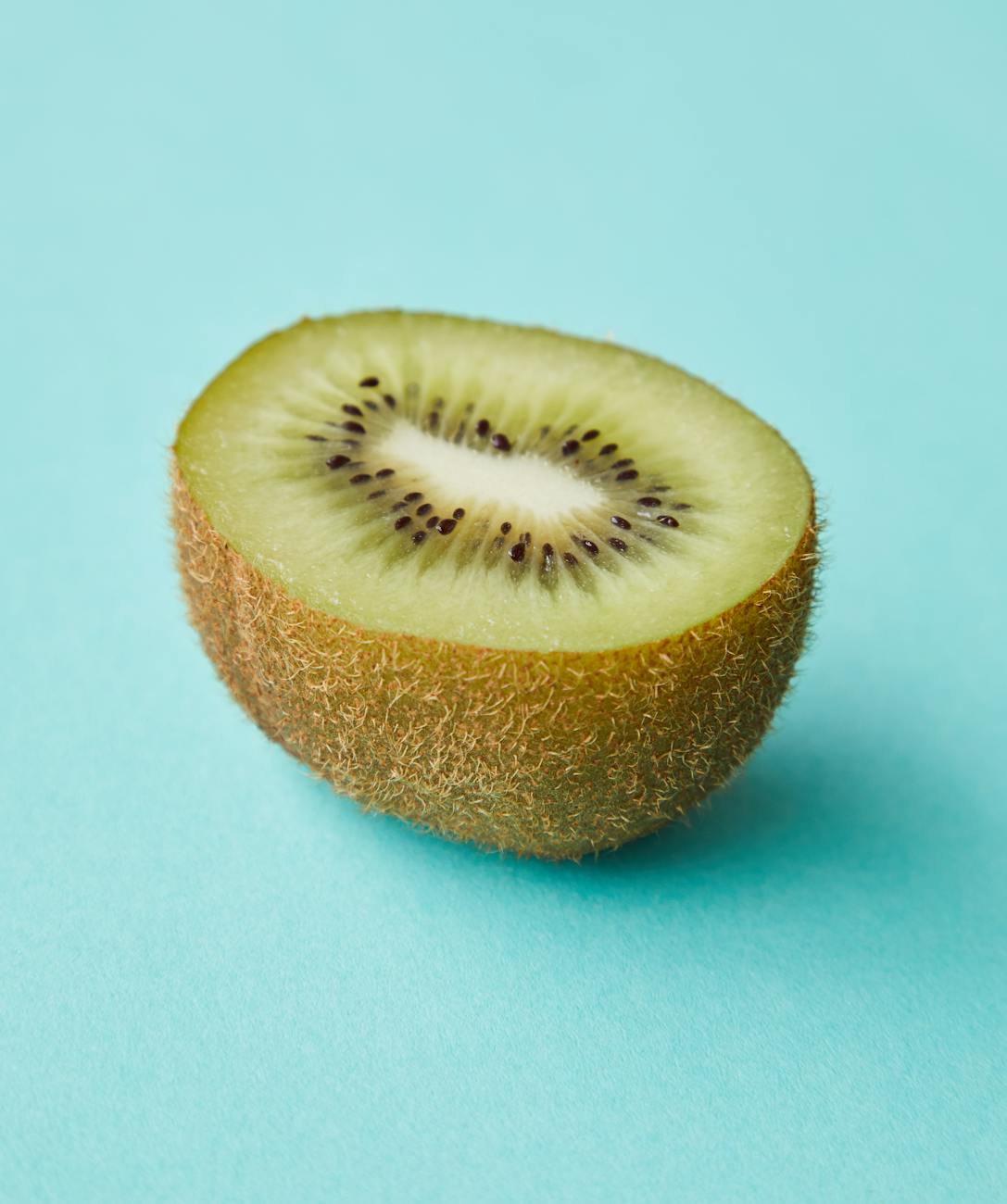
Regular consumption of kiwi has been associated with numerous health benefits. Studies suggest that the fruit can improve respiratory function, reduce the risk of chronic diseases such as heart disease and cancer, and enhance skin elasticity, contributing to a youthful appearance. The presence of actinidin, an enzyme found in kiwis, aids in protein digestion, making the fruit an excellent complement to meals that are high in protein. This combination of vitamins, minerals, fiber, and antioxidants makes kiwi not just a tasty treat but a functional food that supports overall well-being.
Varieties of Kiwi and Their Unique Traits
The kiwi is not a monolithic fruit; rather, it comes in a variety of forms, each with its own unique characteristics that cater to diverse consumer preferences. Understanding these varieties provides deeper insight into the fruit’s versatility and appeal.
Hayward
The Hayward kiwi is the most widely recognized and cultivated variety. Distinguished by its bright green flesh speckled with tiny black seeds, the Hayward offers a tangy flavor that balances sweetness and acidity. Its robust skin, which is brown and slightly fuzzy, protects the delicate flesh inside, making it suitable for long-distance transport and storage. The Hayward’s reliable flavor and texture make it a staple in both domestic and international markets.
Gold Kiwi
In contrast to the traditional green variety, the Gold kiwi boasts smooth, bronze skin and a sweeter, less tart flesh. The golden hue of its interior adds visual appeal, while its mellower taste makes it a favorite among those who prefer a less acidic fruit. Gold kiwis are often eaten fresh or used in fruit salads, desserts, and beverages where their sweetness can shine without overpowering other ingredients.
Baby Kiwi
Baby kiwis, also known as kiwi berries or hardy kiwis, are small, grape-sized fruits that can be eaten whole, skin and all. They offer a sweet, slightly tangy flavor similar to their larger counterparts but with a more concentrated taste. The lack of fuzz on their skin makes them a convenient and appealing option for snacking, especially for children and those who appreciate a smoother texture.
Red Kiwi
The Red kiwi is a relatively recent addition to the kiwi family, featuring red or pink flesh that offers a unique flavor profile and striking appearance. This variety combines the sweetness of the gold kiwi with the tanginess of the green kiwi, providing a complex and refreshing taste experience. The vibrant color also makes it an attractive ingredient in gourmet dishes and visually appealing presentations.
Each variety of kiwi not only caters to different taste preferences but also allows for a broader range of culinary applications. From the robust Hayward to the delicate Baby kiwi, each type brings something distinct to the table, enhancing the fruit’s overall versatility and market appeal.
Cultivation and Global Production
Cultivating kiwi requires a delicate balance of climatic conditions, soil quality, and agricultural practices. The fruit thrives in regions with mild winters and warm summers, where the temperature fluctuations between day and night aid in the development of its sweet and tangy flavor. Major producers of kiwi include Italy, Iran, New Zealand, Chile, and Greece, each contributing to the global supply with their unique environmental conditions and farming techniques.
Climatic Requirements
Kiwi plants are sensitive to extreme temperatures and require well-drained soil with a pH level between 6.0 and 6.5. Frost protection is essential in regions prone to cold snaps, as young vines and fruit can be damaged by freezing temperatures. Adequate sunlight is crucial for photosynthesis and the development of sugars within the fruit, while consistent rainfall or irrigation ensures steady growth and fruit production.
Agricultural Practices
Advancements in agricultural practices have significantly improved kiwi cultivation. Drip irrigation systems provide precise water management, reducing waste and ensuring that the plants receive the optimal amount of moisture. Integrated pest management (IPM) strategies help control pests and diseases with minimal use of chemical pesticides, promoting a healthier and more sustainable farming environment.
Grafting techniques, where the desired kiwi variety is grafted onto a robust rootstock, enhance the plant’s resilience and productivity. Selective breeding programs focus on developing varieties that are more resistant to diseases, have longer shelf lives, and offer improved flavors and textures. These innovations have not only increased yield but also expanded the range of climates and soils in which kiwi can be successfully grown.
Sustainable Farming
Sustainability is becoming increasingly important in kiwi cultivation. Farmers are adopting practices that promote soil health, conserve water, and enhance biodiversity. Organic farming methods, which eschew synthetic pesticides and fertilizers, are gaining traction, responding to consumer demand for environmentally friendly and health-conscious produce. Cover cropping and crop rotation help maintain soil fertility and structure, reducing the need for chemical inputs and preventing soil erosion.
Moreover, efforts to minimize the carbon footprint of kiwi farming include optimizing transportation logistics, utilizing renewable energy sources in processing facilities, and reducing packaging waste. These measures not only protect the environment but also ensure the long-term viability of kiwi orchards, making kiwi a sustainable choice for both producers and consumers.
Culinary Uses and Recipes
The kiwi’s unique flavor and texture make it a versatile ingredient in a wide array of culinary applications. Its ability to complement both sweet and savory dishes has cemented its place in kitchens around the world, from home cooking to gourmet gastronomy.
Salads
In salads, kiwi adds a refreshing sweetness and vibrant color that enhances the overall presentation and taste. Pairing kiwi with leafy greens, such as spinach or arugula, along with ingredients like avocado, nuts, and cheeses creates a balanced and visually appealing dish. The fruit’s tangy notes contrast beautifully with the savory elements, offering a delightful complexity of flavors.
Smoothies and Juices
Kiwi’s natural sweetness and smooth texture make it an excellent addition to smoothies and juices. Blending kiwi with other fruits like bananas, strawberries, and mangoes creates a nutrient-packed beverage that is both delicious and invigorating. The high vitamin C content of kiwi not only boosts the nutritional value but also enhances the overall flavor profile, making smoothies more vibrant and refreshing.
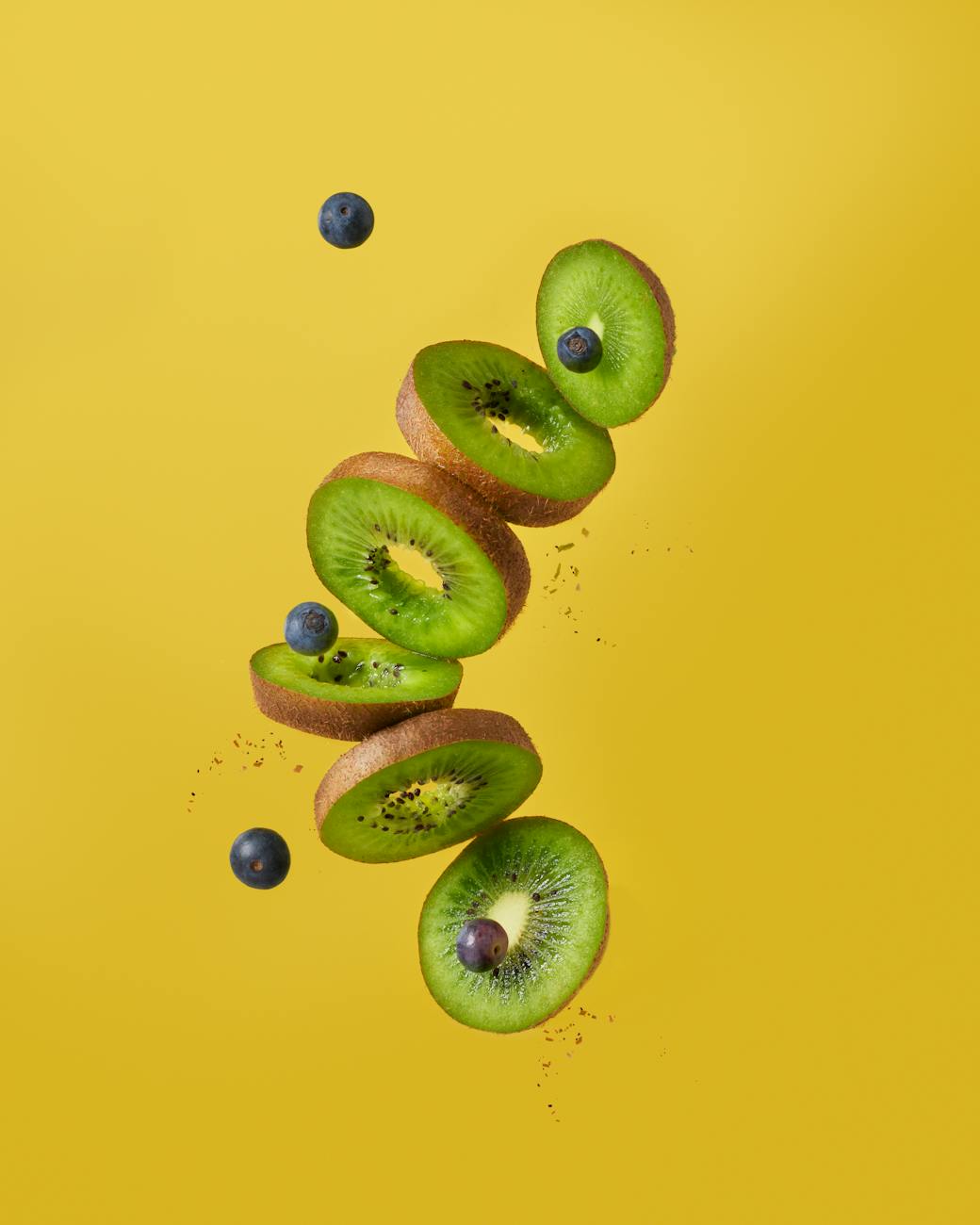
Desserts
In desserts, kiwi can be used in a variety of forms, from fresh slices to purees and compotes. Its tangy flavor complements creamy elements like yogurt, ice cream, and custards, adding a burst of freshness. Kiwi is often incorporated into tarts, parfaits, and sorbets, where its bright color and flavor can be showcased. The fruit’s ability to blend seamlessly with other ingredients allows for innovative and visually stunning dessert creations.
Salsas
Kiwi’s unique taste also lends itself well to savory applications, such as salsas. Combining kiwi with ingredients like avocado, cilantro, onions, and jalapeños creates a vibrant and flavorful condiment that pairs perfectly with grilled meats, seafood, and tacos. The fruit’s sweetness balances the heat of the spices, resulting in a harmonious blend of flavors that elevates any dish.
Innovative Recipes
Creative chefs and home cooks alike continue to push the boundaries of kiwi’s culinary potential. From kiwi-infused cocktails and marinades to baked goods and even savory sauces, the fruit’s versatility is continually being reimagined. Its ability
to enhance both the taste and visual appeal of a dish makes kiwi a favorite ingredient in experimental and contemporary cuisine, ensuring that it remains a beloved component in the ever-evolving culinary landscape.
Economic Impact and Market Trends
The kiwi industry plays a significant role in the economies of major producing countries, contributing to agricultural GDP and providing employment opportunities. The global demand for kiwi has been steadily increasing, driven by factors such as rising health consciousness, the fruit’s inclusion in various dietary regimes, and its versatility in culinary applications. Understanding the economic dynamics and market trends surrounding kiwi offers valuable insights into its continued growth and potential.
Export Revenues and Agricultural Support
Countries like Italy, New Zealand, Chile, and Greece are major exporters of kiwi, with their produce reaching markets across Europe, North America, Asia, and beyond. Export revenues from kiwi sales support the agricultural sectors of these countries, funding research and development, improving farming practices, and sustaining rural economies. The success of kiwi as an export commodity also encourages investment in infrastructure, such as transportation and storage facilities, which are crucial for maintaining the fruit’s quality during transit.
Market Trends
Several market trends are influencing the kiwi industry. One notable trend is the increasing consumer awareness of the health benefits associated with kiwi consumption. As people become more health-conscious and seek out nutrient-dense foods, kiwi’s profile as a superfruit gains prominence. Additionally, the fruit’s versatility in both sweet and savory dishes makes it a popular choice for a wide range of culinary applications, further driving demand.
Another trend is the development of value-added products. Beyond fresh fruit, the kiwi industry has expanded to include dried kiwi, kiwi-based beverages, and functional foods enriched with kiwi extracts. These products cater to different consumer preferences and lifestyles, offering convenient and innovative ways to enjoy the benefits of kiwi. The diversification of product offerings not only enhances market appeal but also increases profitability for producers and distributors.
Global Supply Chain and Trade Dynamics
The global supply chain for kiwi involves a complex network of growers, exporters, importers, distributors, and retailers. Trade agreements and international relations significantly impact the flow of kiwi between countries. For instance, favorable trade policies and reduced tariffs can facilitate easier access to international markets, boosting exports and expanding the fruit’s global footprint. Conversely, trade disputes and regulatory changes can pose challenges, requiring producers to adapt and seek alternative markets.
Sustainability is also becoming a critical factor in the global supply chain. Consumers and retailers are increasingly demanding transparency and responsible practices from producers, prompting the adoption of sustainable farming methods and ethical labor practices. These demands not only influence market dynamics but also drive innovation and improvement within the kiwi industry, ensuring its resilience and adaptability in the face of changing global conditions.
Environmental Considerations in Kiwi Farming
The cultivation of kiwi, like all agricultural practices, has environmental implications that necessitate careful consideration and proactive management. Sustainable farming practices are essential to mitigate the environmental impact of kiwi production, ensuring that the industry can continue to thrive without degrading natural resources or harming ecosystems.
Soil Health and Conservation
Healthy soil is the foundation of successful kiwi cultivation. Practices such as cover cropping, crop rotation, and the use of organic fertilizers enhance soil fertility and structure, promoting robust plant growth and reducing erosion. Cover crops, for example, protect the soil from erosion, improve moisture retention, and add organic matter, which boosts microbial activity and nutrient availability. Crop rotation helps break pest and disease cycles, reducing the need for chemical interventions and fostering a more resilient agricultural system.
Water Conservation
Water is a critical resource in kiwi farming, and efficient water management is paramount. Drip irrigation systems, which deliver water directly to the plant roots, minimize water waste and ensure that the kiwi plants receive the precise amount of moisture they need. This method not only conserves water but also reduces the risk of diseases that thrive in overly moist conditions. Additionally, rainwater harvesting and the use of treated wastewater for irrigation are emerging as sustainable practices that further enhance water conservation efforts.
Biodiversity and Ecosystem Protection
Maintaining biodiversity within kiwi orchards is crucial for ecosystem health and resilience. Diverse plant species attract beneficial insects, such as pollinators and natural pest predators, which help control pest populations and enhance pollination rates. Integrating hedgerows, flowering plants, and other biodiversity-promoting features into kiwi orchards creates a balanced and thriving ecosystem that supports both the fruit and the surrounding environment.
Carbon Footprint Reduction
Reducing the carbon footprint of kiwi farming involves adopting practices that lower greenhouse gas emissions and enhance carbon sequestration. This can be achieved through the use of renewable energy sources, such as solar or wind power, in processing facilities and transportation logistics. Additionally, minimizing the use of synthetic fertilizers and pesticides, which are energy-intensive to produce, contributes to lower overall emissions. Sustainable packaging solutions, such as biodegradable or recyclable materials, also play a role in reducing the environmental impact of kiwi distribution and sale.
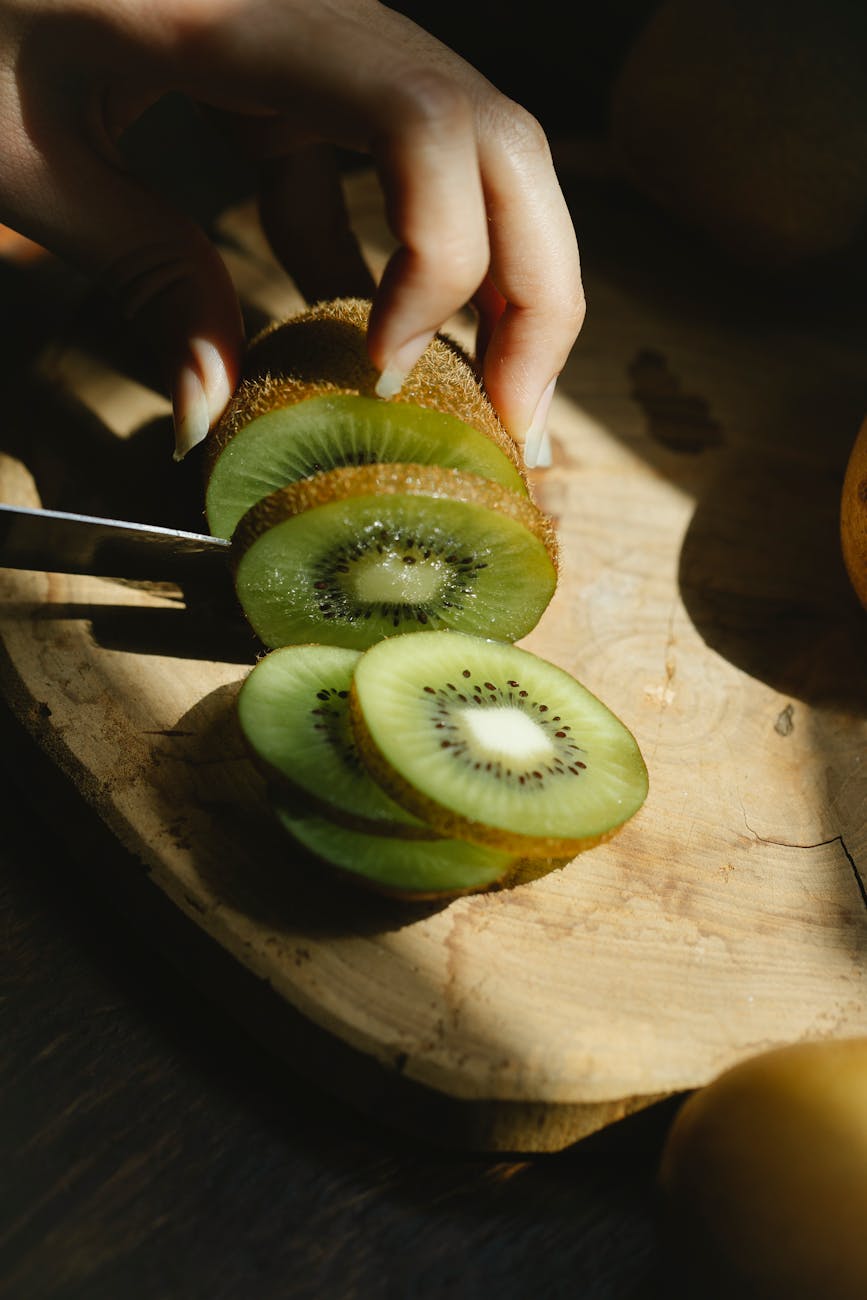
Innovations and Future of Kiwi
The future of kiwi cultivation and consumption is being shaped by a wave of technological advancements and evolving consumer preferences. Innovations in agricultural technology, breeding programs, and product development are driving the industry forward, ensuring that kiwi remains a beloved and relevant fruit in the global market.
Precision Agriculture
Precision agriculture leverages data analytics, automation, and IoT (Internet of Things) technologies to optimize farming practices. By collecting and analyzing data on soil conditions, weather patterns, and plant health, farmers can make informed decisions that enhance yield and quality while minimizing resource use. For example, sensors placed in kiwi orchards can monitor soil moisture levels and nutrient content in real-time, enabling precise irrigation and fertilization. This targeted approach not only improves efficiency but also reduces waste and environmental impact.
Breeding Programs
Breeding programs are focusing on developing new kiwi varieties that offer improved traits, such as enhanced flavor, extended shelf life, and increased resistance to pests and diseases. Genetic research and selective breeding techniques are being employed to create kiwis that can thrive in diverse climates and withstand environmental stresses. These efforts aim to ensure the sustainability and resilience of kiwi production in the face of climate change and other global challenges.
Functional Foods and Nutraceuticals
The integration of kiwi into functional foods and nutraceuticals is opening new avenues for its application. Functional foods are designed to provide health benefits beyond basic nutrition, and kiwi’s rich nutrient profile makes it an ideal candidate for such products. Kiwi extracts and concentrates are being incorporated into supplements, energy bars, and fortified beverages, catering to the growing demand for health-oriented products. This trend not only expands the market for kiwi but also enhances its value as a health-promoting ingredient.
Sustainable Packaging and Distribution
Innovations in packaging and distribution are also shaping the future of the kiwi industry. Sustainable packaging solutions, such as biodegradable materials and reusable containers, are being adopted to reduce environmental impact. Additionally, advancements in logistics and supply chain management are improving the efficiency of kiwi distribution, ensuring that the fruit reaches consumers quickly and in optimal condition. These innovations contribute to a more sustainable and eco-friendly kiwi industry, aligning with consumer values and environmental priorities.
Buy Kiwi in Qatar
If you’re aiming to buy kiwi in Qatar, Getit.qa offers a seamless experience. This online platform simplifies the process of obtaining fresh kiwi fruit by bringing it right to your doorstep. By visiting their website and searching for kiwi, you can easily place an order and enjoy the convenience of home delivery. Getit.qa ensures quality produce and efficient service, making it effortless to include kiwi in your daily diet.
Winding Down
The kiwi fruit stands as a remarkable example of how a simple, vibrant fruit can embody a rich history, exceptional nutritional benefits, and significant economic and environmental impact. From its humble beginnings in China to its widespread cultivation in New Zealand, Italy, Chile, and beyond, the kiwi has journeyed across continents, adapting and thriving in diverse environments. Its diverse varieties, each with unique traits, cater to a broad spectrum of tastes and culinary applications, making it a staple in kitchens around the world.
The kiwi’s nutritional profile, packed with vitamins, minerals, fiber, and antioxidants, underscores its status as a superfruit, contributing to improved health and well-being for those who consume it. The economic significance of kiwi production supports agricultural sectors and rural economies, while sustainable farming practices ensure that the fruit’s cultivation does not come at the expense of the environment. Innovations in precision agriculture, breeding programs, and functional foods point to a promising future for kiwi, where technological advancements and evolving consumer preferences continue to drive its growth and relevance.
As we look ahead, the kiwi fruit serves as a reminder of the intricate connections between agriculture, economy, health, and sustainability. Embracing the kiwi’s potential not only enriches our culinary experiences but also supports a more sustainable and prosperous global food system. Whether enjoyed fresh, blended into a smoothie, or incorporated into a gourmet dish, the kiwi remains a testament to the wonders of nature and human ingenuity, offering both delight and nourishment to people around the world.
For those interested in exploring further, consider delving into related topics such as sustainable agricultural practices, the global fruit market dynamics, or the role of antioxidants in promoting health. Understanding these interconnected subjects provides a deeper appreciation for the kiwi and its place in our world, highlighting the fruit’s enduring appeal and its contribution to our collective well-being.
FAQs
1. What are the main health benefits of eating kiwi?
Kiwi is rich in vitamins C and K, dietary fiber, and antioxidants. It supports the immune system, aids digestion, promotes heart health, and contributes to better skin and eye health.
2. How should I store kiwi to keep it fresh longer?
Kiwi should be stored at room temperature until it ripens. Once ripe, it can be kept in the refrigerator for up to a week to maintain its freshness and flavor.
3. Can kiwi be used in savory dishes?
Yes, kiwi’s unique sweet and tangy flavor makes it a great addition to savory dishes such as salsas, salads, and marinades, where it can complement and enhance other ingredients.
4. What are the different varieties of kiwi available?
The main varieties include Hayward (green), Gold, Baby kiwi, and Red kiwi, each with distinct flavors, textures, and appearances to suit different preferences and culinary uses.
5. How is kiwi cultivated sustainably?
Sustainable kiwi cultivation involves practices such as drip irrigation, integrated pest management, organic farming, crop rotation, and the use of renewable energy sources to minimize environmental impact and promote soil and water conservation.
6. Which countries are the largest producers of kiwi?
Italy, New Zealand, Chile, Iran, and Greece are among the largest producers of kiwi, each contributing significantly to the global supply with their unique climatic conditions and farming techniques.
7. What are some innovative ways to use kiwi in recipes?
Kiwi can be used in smoothies, salads, desserts, salsas, marinades, and even as a natural meat tenderizer. Its versatility allows it to be incorporated into both sweet and savory dishes creatively.
8. How does kiwi contribute to environmental sustainability?
Kiwi farming practices such as soil conservation, water efficiency, biodiversity enhancement, and carbon footprint reduction contribute to environmental sustainability by protecting natural resources and promoting eco-friendly agricultural methods.
9. What future trends are shaping the kiwi industry?
Future trends include the adoption of precision agriculture, development of new kiwi varieties through breeding programs, integration into functional foods and nutraceuticals, and advancements in sustainable packaging and distribution.
10. Why is kiwi considered a superfruit?
Kiwi is considered a superfruit due to its high concentration of essential nutrients, including vitamins, minerals, fiber, and antioxidants, which provide numerous health benefits and support overall well-being.
